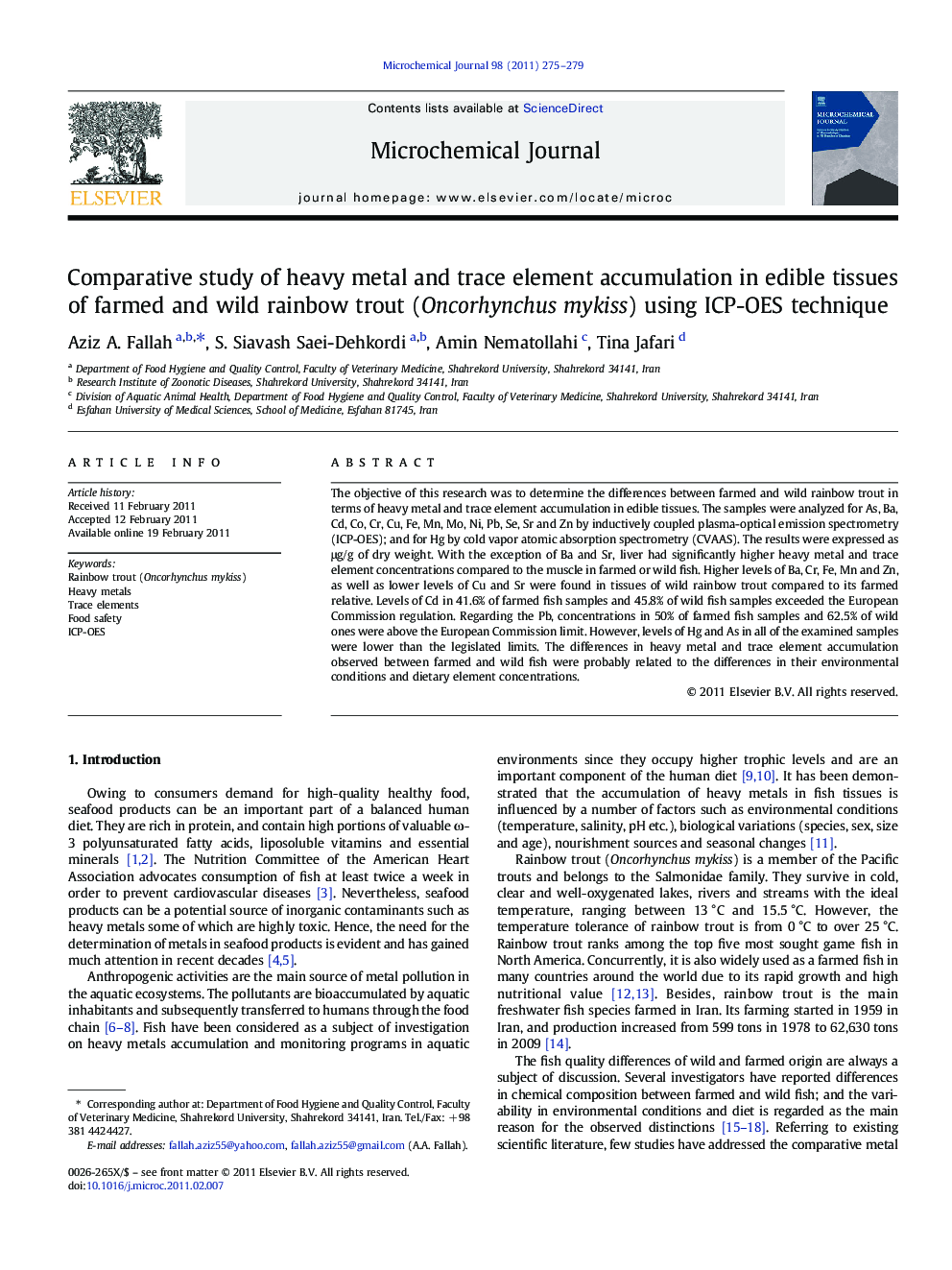| Article ID | Journal | Published Year | Pages | File Type |
|---|---|---|---|---|
| 1228037 | Microchemical Journal | 2011 | 5 Pages |
The objective of this research was to determine the differences between farmed and wild rainbow trout in terms of heavy metal and trace element accumulation in edible tissues. The samples were analyzed for As, Ba, Cd, Co, Cr, Cu, Fe, Mn, Mo, Ni, Pb, Se, Sr and Zn by inductively coupled plasma-optical emission spectrometry (ICP-OES); and for Hg by cold vapor atomic absorption spectrometry (CVAAS). The results were expressed as μg/g of dry weight. With the exception of Ba and Sr, liver had significantly higher heavy metal and trace element concentrations compared to the muscle in farmed or wild fish. Higher levels of Ba, Cr, Fe, Mn and Zn, as well as lower levels of Cu and Sr were found in tissues of wild rainbow trout compared to its farmed relative. Levels of Cd in 41.6% of farmed fish samples and 45.8% of wild fish samples exceeded the European Commission regulation. Regarding the Pb, concentrations in 50% of farmed fish samples and 62.5% of wild ones were above the European Commission limit. However, levels of Hg and As in all of the examined samples were lower than the legislated limits. The differences in heavy metal and trace element accumulation observed between farmed and wild fish were probably related to the differences in their environmental conditions and dietary element concentrations.
